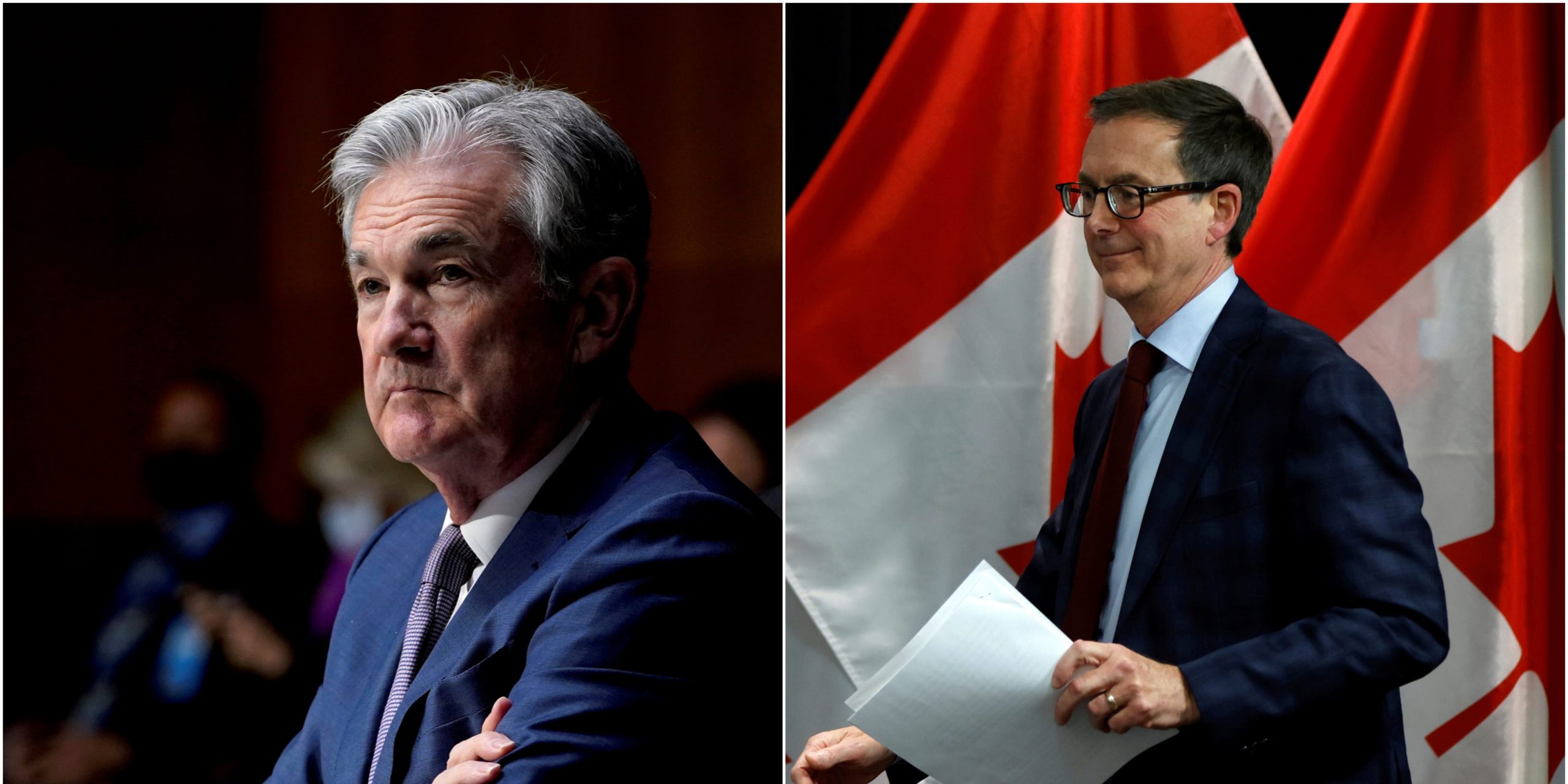
- The Bank of Canada is pulling back on its monetary support, striking a contrast with the Fed's strategy.
- The move comes despite Canada lagging the US in vaccination and GDP recovery.
- The Fed has said it isn't even considering such a pullback, signaling a divergence in the countries' recovery plans.
- See more stories on Insider's business page.
The Federal Reserve and the Bank of Canada will use drastically different playbooks for the remainder of their nations' respective economic recoveries.
The US central bank has indicated it will leave rates near zero for the foreseeable future, and that it isn't even considering reining in its emergency asset purchases.
Canada's monetary authority struck a starkly different tone on Wednesday. The Bank of Canada revealed it will taper its asset purchases by 25% and pull forward its forecast for a possible rate hike. Officials now expect a full recovery to arrive sooner than they projected just three months ago.
"With the economy proving more resilient to the pandemic and vaccines rolling out, we are hopeful there will be less labor-market scarring and less lost capacity than we earlier feared," Bank of Canada Governor Tiff Macklem said in a statement.
The Bank of Canada's decision marks the biggest step yet from a major central bank toward policy normalization. It also establishes a contrast from the Fed's outlook despite Canada sitting further from a complete rebound.
For one, Canada's current vaccination rate suggests it will take roughly six months to inoculate 75% of the country's population, according to Bloomberg data. The US, on the other hand, is just three months from achieving that goal.
The US has also recovered more of its economic output since the pandemic first froze activity. Canada's gross domestic product fell further in 2020, and though both countries are on track to return to pre-pandemic GDP levels, the US has made more progress.
To be sure, Canada's economy differs significantly from the US's, and, in some ways, is further along in its recovery. Canada's employment rate is just 1.3 percentage points below its pre-pandemic level, compared to the US's deficit of 3.1 points.
The Bank of Canada's stance is also more in line with what markets anticipated. Investors already priced in a rate hike arriving sometime in 2022. That compares to Treasury-market signals that project the Fed taking longer to normalize its monetary policy.
The Canadian bank's decision to pare back its asset purchases places fresh pressure on the Fed to provide more detail on when it will take similar action. Fed Chair Jerome Powell reiterated last week that, until the Fed sees "substantial further progress" toward above-2% inflation and maximum employment, the central bank isn't thinking about tapering its asset purchases.
Fed officials have also promised to give investors a heads-up on when they're starting to consider pulling back their policy support. For now, the central bank expects reopening to lift inflation to 2.4% in 2021 before it fades to roughly 2% next year.
The Bank of Canada holds a far more conservative outlook. Officials said Wednesday they already see inflation falling below 2% through the rest of the year before trending at that level in the second half of 2022.
The dueling forecasts strike at the core of the central banks' different policy strategies. The Fed's framework will allow inflation to run hot in hopes of driving a healthier recovery. By leaving ultra-loose monetary policy in place, the country can pursue stronger consumer spending and a tighter labor market.
The Bank of Canada's Wednesday announcement previews a more austere approach. With a full recovery on the horizon, officials see little need for several more years of unprecedented support.
Dit artikel is oorspronkelijk verschenen op z24.nl
